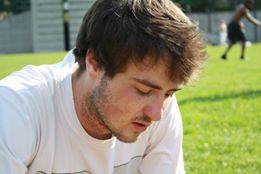About

I am currently a post doctoral researcher looking for real world applications to which apply my skills in computer vision.
My main research interest concerns the development of statistical, machine learning and deep learning models for real world applications in computer vision. I am particularly interested in modelling complex, low sampled and high dimensional data. I have mostly applied my research to the bioimaging field and in particular to large 2D images (>60GB when uncompressed), 3D imaging and video data. Applying my research to these goal oriented projects and tackling inherent difficulties in the data has led to me to build a keen interest in transfer learning and learning from imperfect and noisy data, which includes weakly supervised learning and self-supervised learning.
I am very interest in collaborating on bioimage related topics and also in applying my research to new fields and to cross different input modalities such as sound, satellite imaging and gene expression data.
Please do not hesitate to reach out.
You can find my CV at the following link.
Past research activity descriptions
My area of research is statistics, machine learning and computational biology. I have a particular interest for biological applications. My research has so far been mostly focused on applying modern data processing techniques to histopathology. Histopathology examines skin pieces seen through a very powerful microscope. Histopathology data can be very large (>60 GB per image) and are very complex to analyse due to the high variability in cell shape, type and staining. Our goal is to use histopathological data in order to discover biologically relevant information which is predictive of treatment responses. I am currently working on two medical topics:
- Breast Cancer; This project has been developed with the help Fabien Reyal’s group and works with data from Triple Negative Breast Cancer patients, who underwent chemotherapy. Patient responses are very different and we wish to find biologically relevant patterns or features that could predict the patient’s response to chemotherapy. The bottleneck of this project is nuclei segmentation within histopathology data. It is performed with the state of the art deep neural networks. To be able to quantify patients’ histopathological data will eventually lead to personal patient features such as proportion of cancerous cells with respect to the normal endothelial cells, or spatial arrangement features could be revealed.
- pan-cancer; Using the same biologically relevant content mentioned above, we wish to uncover patterns that lead to cancer subgroups.
